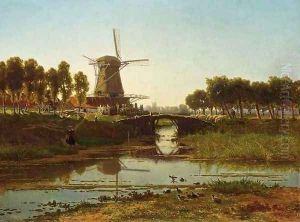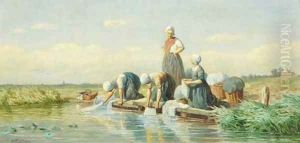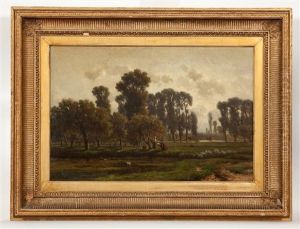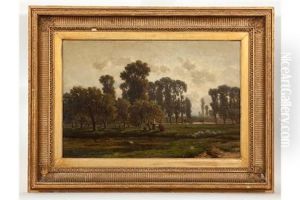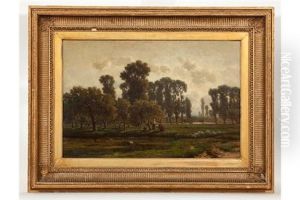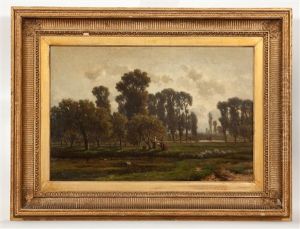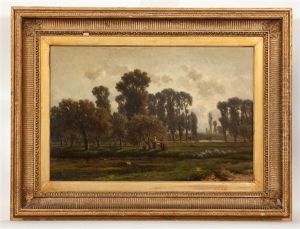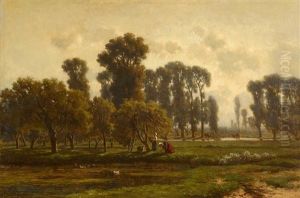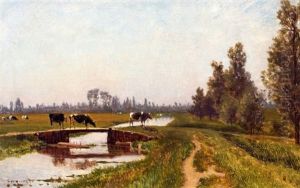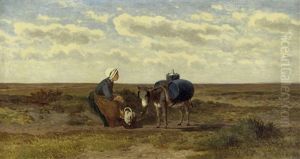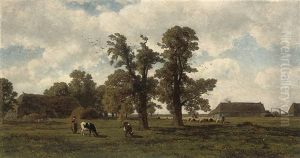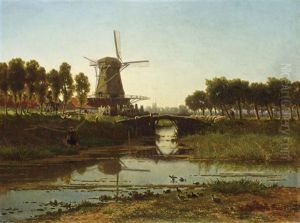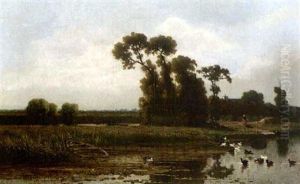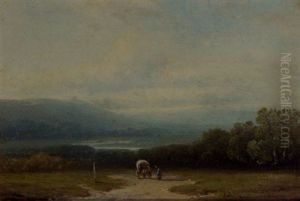Gerrit Alexander Godart Mollinger Paintings
Gerrit Alexander Godart Mollinger, also known as G.A.G. Mollinger, was a Dutch artist born on December 30, 1860, in Zwolle, Netherlands. He is primarily recognized for his landscape paintings, though detailed information about his life and works is not widely documented in international art historical literature.
Mollinger's artistic journey began in his hometown of Zwolle, where he developed his skills before moving to the city of The Hague, which was a prominent Dutch art center at the time. The Hague was known for the Hague School of painters, which focused on realistic landscapes and everyday scenes. While it is not clear if Mollinger was directly associated with this group, the influence of the Hague School is visible in his approach to landscapes and his tonal palette.
Throughout his career, Mollinger remained relatively obscure, yet he was a prolific artist, creating numerous landscapes that captured the serene and pastoral qualities of the Dutch countryside. His works often feature a harmonious interplay of light and shadow, with a subdued color scheme that evokes a sense of calm and tranquility. He was skilled in depicting the changing seasons and the varying atmospheres they brought to the landscape.
Mollinger's paintings were typically oil on canvas, and he had a particular affinity for depicting waterways, with many of his works featuring rivers, canals, and the reflective qualities of water. These elements became a signature part of his artistic identity, setting his work apart from his contemporaries.
Despite his talent, Mollinger did not achieve significant fame during his lifetime, and his work was mainly appreciated by a small group of collectors and art enthusiasts. His paintings occasionally appear at auctions and in private collections, appreciated for their quiet beauty and traditional representation of the Dutch landscape.
Gerrit Alexander Godart Mollinger passed away on June 1, 1930, in The Hague. His legacy lives on through his paintings, which continue to be a testament to his dedication to the landscape genre and his skill as an artist. While he may not be as well-known as some of his Dutch contemporaries, Mollinger's work remains a valuable part of the Netherlands' artistic heritage.
